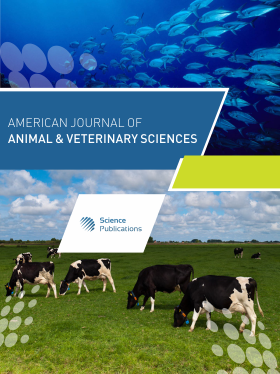Dietary Management Strategies to Mitigate Decreased Feed Intake Associated with Terminal Implant Administration in Finishing Beef Steers
- 1 Department of Animal Science, South Dakota State University, Brookings, SD, United States
Abstract
Re-implanting with a terminal implant often reduces subsequent dry matter intake (DMI). Crossbred steers (n = 27, initial body weight = 385 ± 30.8 kg) were used to assess the effects of locomotion immediately after terminal implantation and increased forage inclusion 7-d post-implantation on feed and water intake, rumination, and activity. Steers were implanted with 100 mg trenbolone acetate and 14 mg estradiol benzoate (Synovex Choice; Zoetis, Parsippany, NJ) and fed a finishing diet (1.43 Mcal NEg/kg DM). Steers were re-implanted on d-87 with 200 mg trenbolone acetate and 28 mg estradiol benzoate (Synovex Plus; Zoetis). Steers were allocated into 3 post-implanting treatments: (1) Moved 0.43 km following re-implanting (CON), (2) Moved 1.05 km (ACT), or (3) Moved 1.05 km with increased forage for 7d (ACT + DIET). Feed and water intake were measured using an Insentec RIC system (Hokofarm, Marknesse, Netherlands) with activity measured using accelerometer tags (Sense Hub Beef; All Flex Livestock Intelligence, Madison, WI). Treatment did not affect cumulative DMI or cattle performance (p ≥0.67). Treatment and day interacted for DMI with CON greater than ACT + DIET on d5-10 (p ≤0.05) and tended (p = 0.06) to be greater on d4. Treatment and day interacted for rumination time (p = 0.02) with ACT and ACT + DIET greater than CON on d5 and ACT ruminating longer on d14 than either CON or ACT + DIET. Cumulative rumination time increased for ACT and ACT + DIET compared to CON (p ≤0.001). Activity time differed (p = 0.001) between all treatments. Treatment affected cumulative water intake (p = 0.001) with ACT steers drinking less than CON or ACT + DIET. Increased activity tended to reduce DMI immediately following re-implantation. Increased roughage inclusion after re-implanting did not affect DMI or performance but increased rumination time.
DOI: https://doi.org/10.3844/ajavsp.2024.360.370

- 2,825 Views
- 1,554 Downloads
- 0 Citations
Download
Keywords
- Feedlot
- Re-Implant
- Roughage
- Activity
- Water
